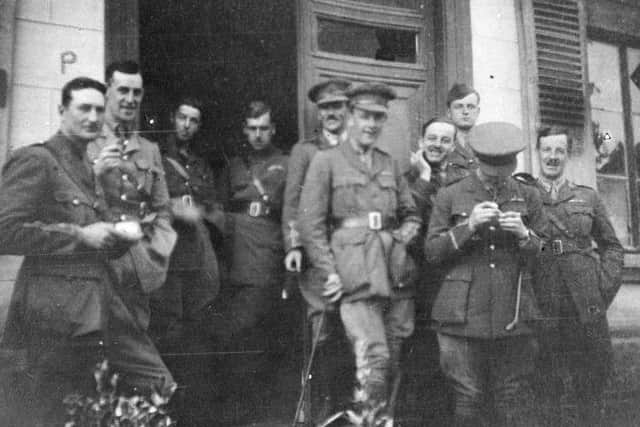How the RAF's '˜Coming of Age' led to British victory at the Battle of Amiens 100 years ago
and live on Freeview channel 276
General Rawlinson, commanding the British Fourth Army, wrote ‘no factor did more to bring about success than the skilful co-operation with the infantry, of the various arms-cavalry, artillery, machine-gunners, engineers, the Air Force, and last but not least the tanks’. Whereas his German counterpart, General Ludendorff, called 8 August ‘the black day of the German Army in the war’.
Major General John Salmond, commanding the RAF on the Western Front, concentrated 47% of his strength, some 900 aircraft, for the battle, opposed by initially fewer than 400 German aircraft.
Advertisement
Hide AdAdvertisement
Hide AdThe RAF’s control of the air before the battle enabled the Fourth Army to achieve complete surprise by preventing German aerial reconnaissance. Furthermore, British night bombers drowned the noise of assembling British tanks, British aerial reconnaissance detected 95% of German artillery, and for the first time, every infantry platoon was issued with aerial photographs of its objectives.


On the first morning, British bombers raided German airfields and later railways to disrupt reinforcements. Reconnaissance aircraft flew patrols to maintain contact with advancing troops and warn of counter-attacks, and, in a new role, Major Trafford Leigh-Mallory’s 8 Squadron RAF warned the advancing British tanks of anti-tank guns and obstacles.
Nine RAF fighter squadrons strafed retreating German troops who described the sky as being ‘alive with [enemy] aeroplanes’. Remarkably a train and two 11.5 inch guns surrendered to Sopwith Camels of 201 Squadron pending the arrival of British cavalry.
At around midday on 8 August, Major Keith Park’s 48 Squadron detected retreating German troops and transport cramming bridges across the Somme. Salmond ordered a total of 700 bomber and fighter sorties against the bridges over the next three days, sustaining heavy losses despite the crews’ valiant efforts.
Advertisement
Hide AdAdvertisement
Hide AdNevertheless, Amiens was an outstanding combined arms success and paved the way for the Allies’ eventual victory. From this start of the ‘100 days to victory’, the RAF rapidly adapted and innovated to meet the challenges and opportunities presented by a new form of combined-arms warfare, which was much changed from the trench warfare which had dominated the Western Front until that point.
Notably, just weeks after the Battle of Amiens, technology advances allowed the RAF to create a radio-equipped ‘Central Information Bureau’ to combine ground and air intelligence and ground control fighters against air and ground targets. Air power was beginning to demonstrate its full potential – not just as an ancillary to surface forces, but in delivering substantial effects in its own right. It was, in essence, the Royal Air Force’s coming of age.